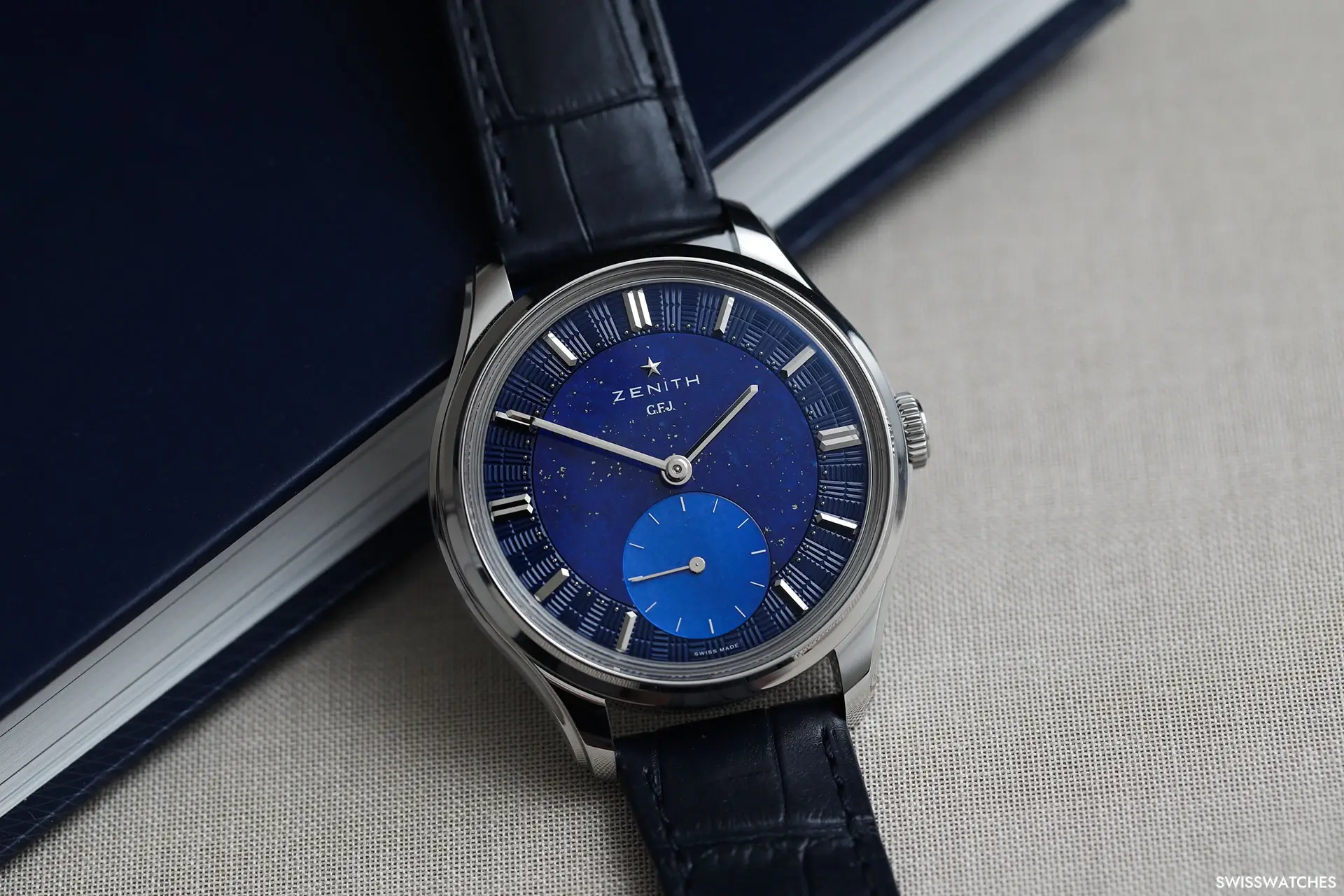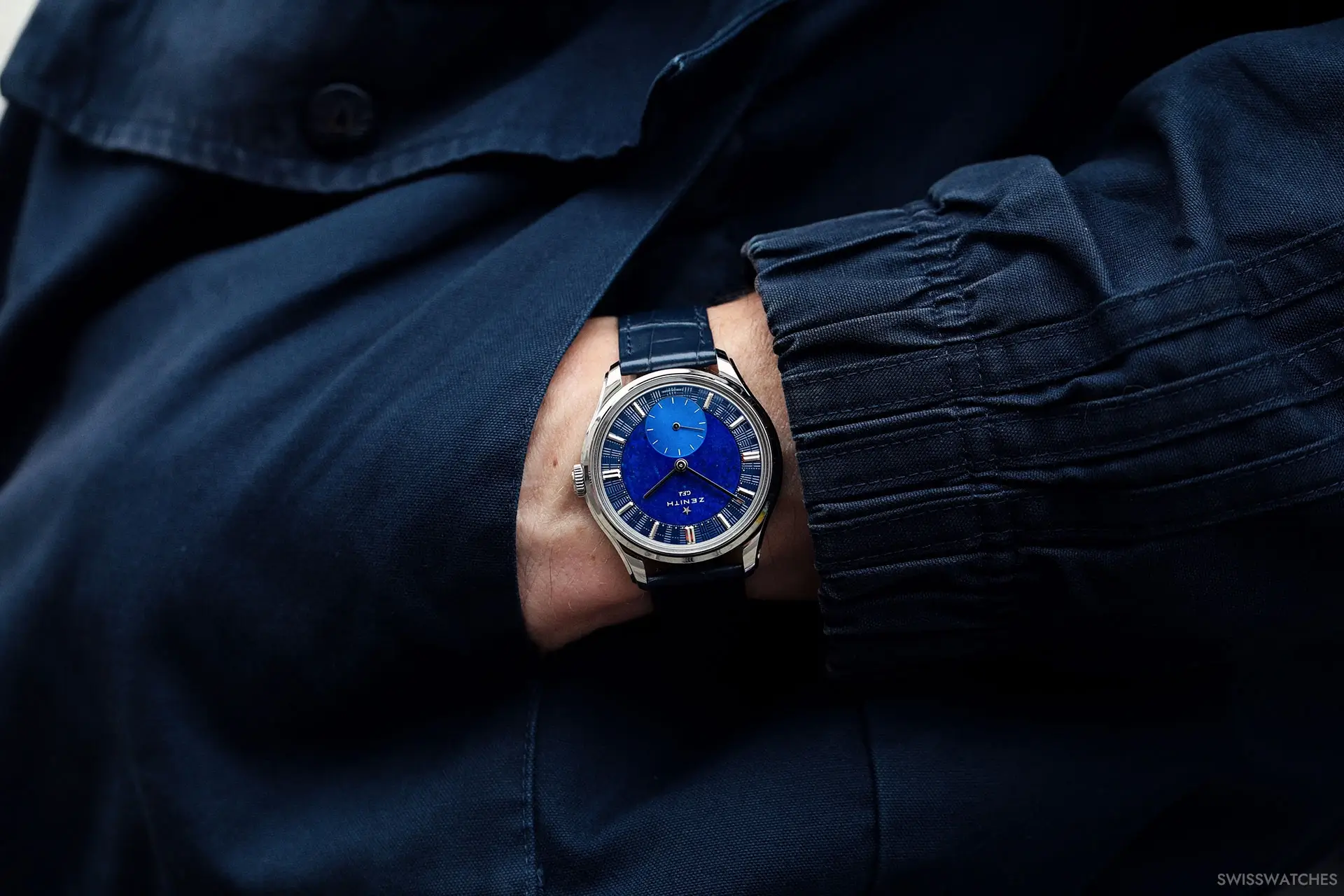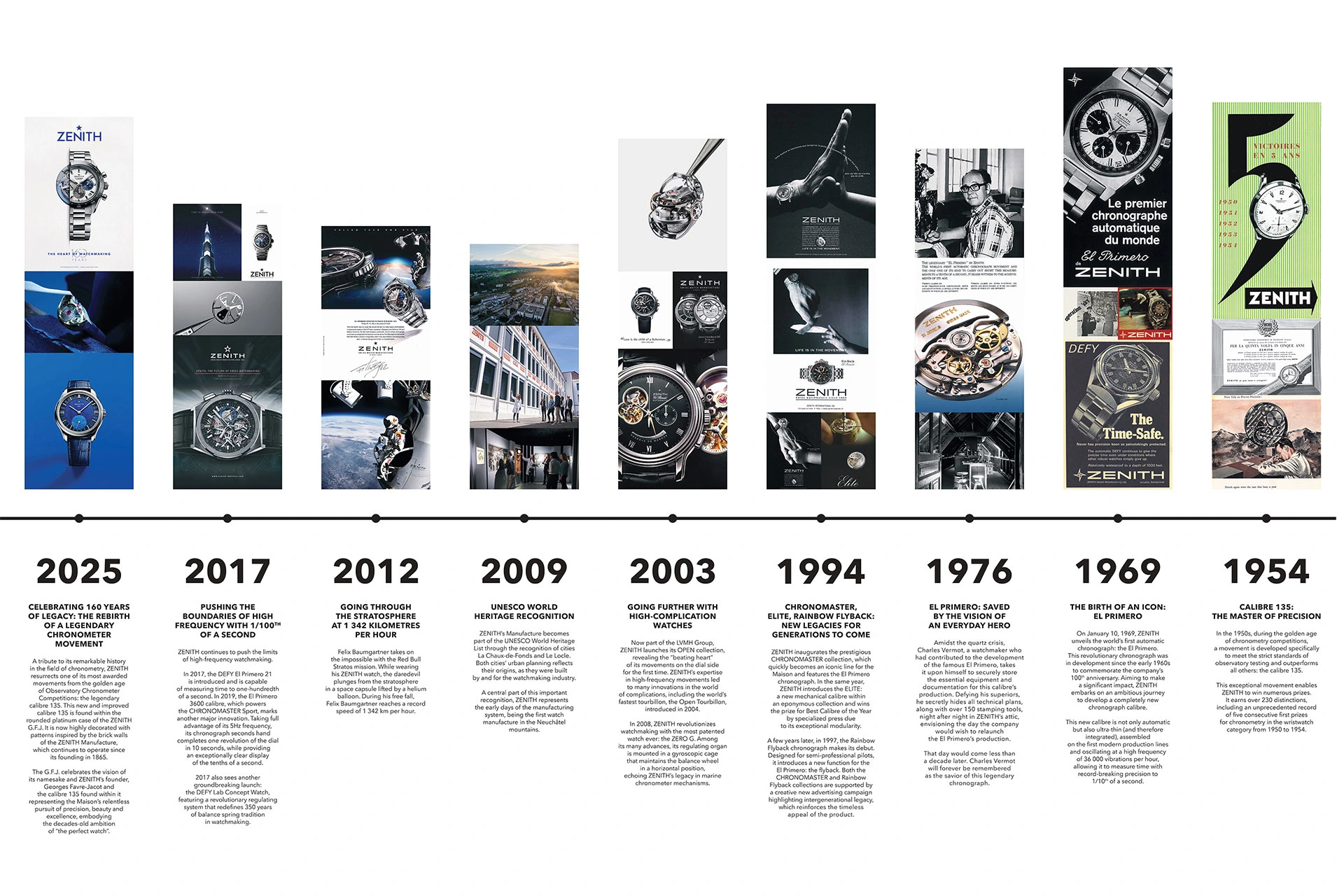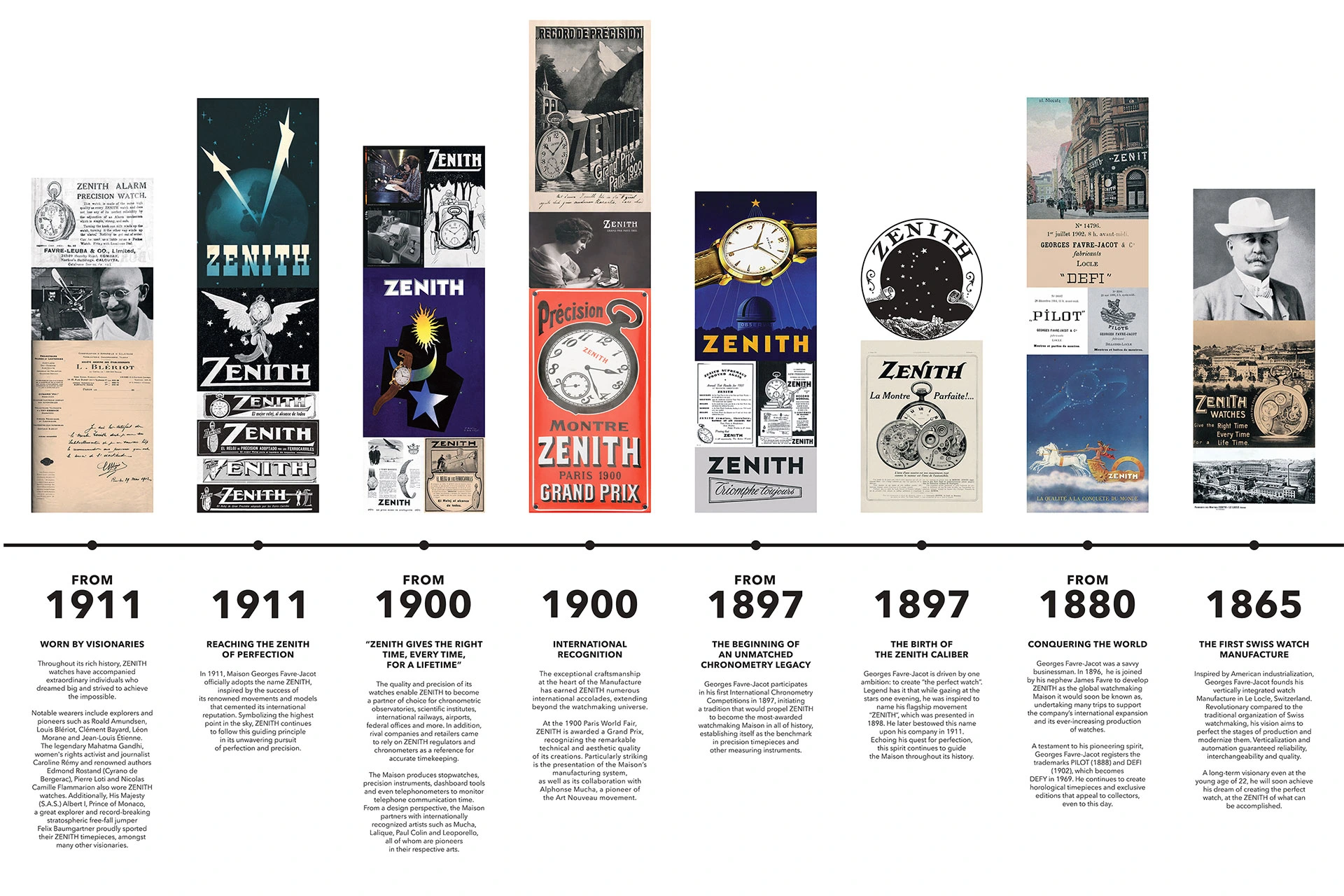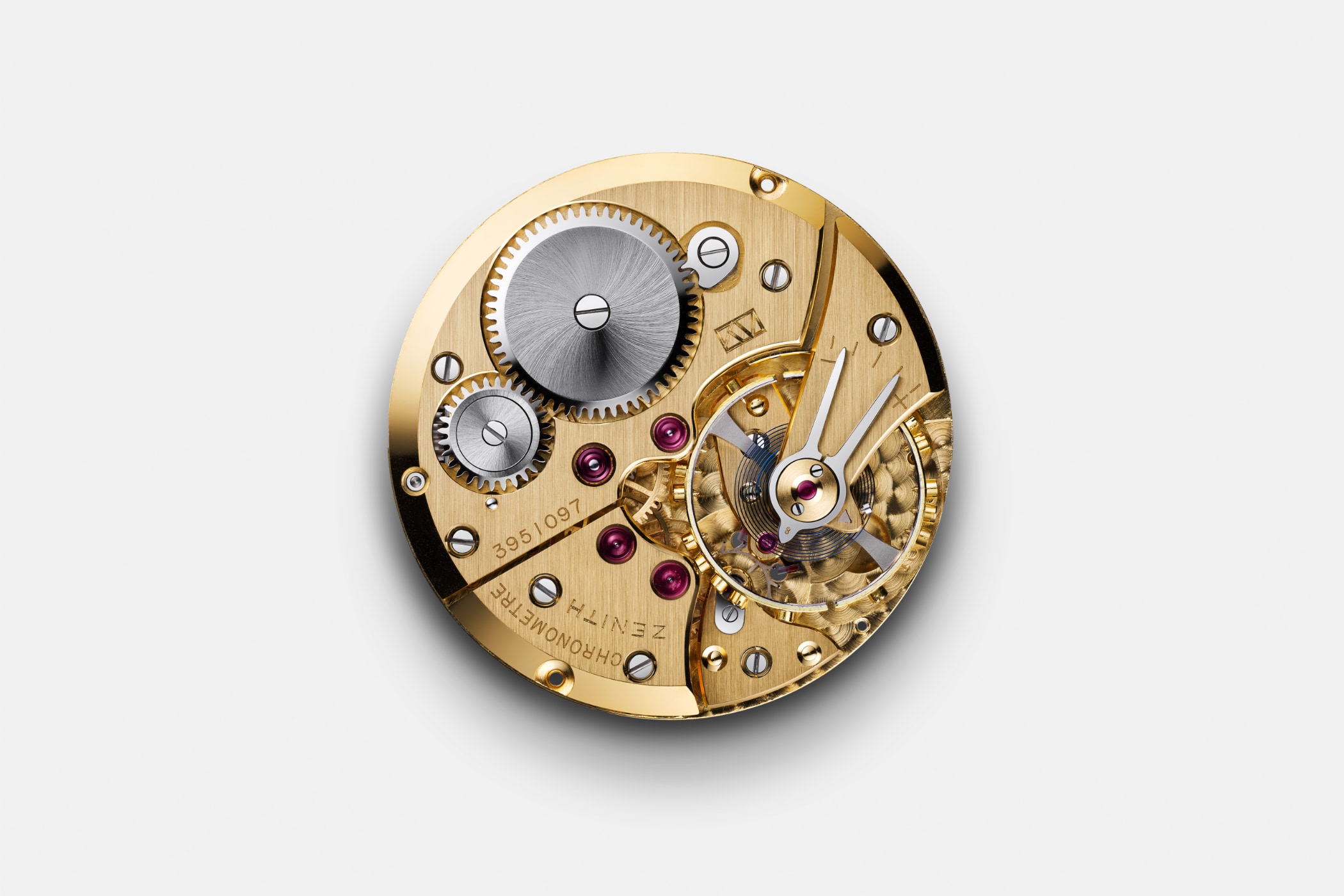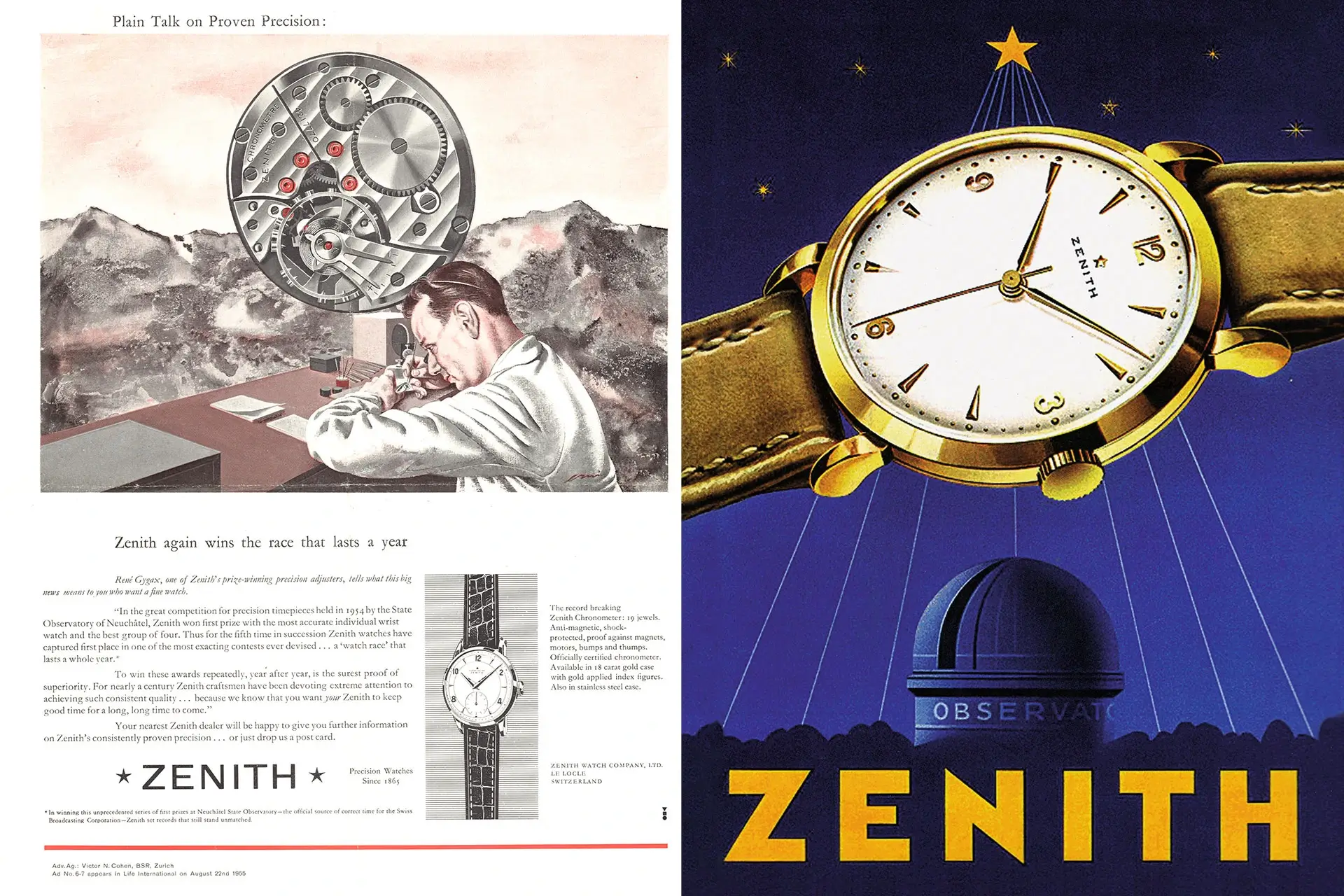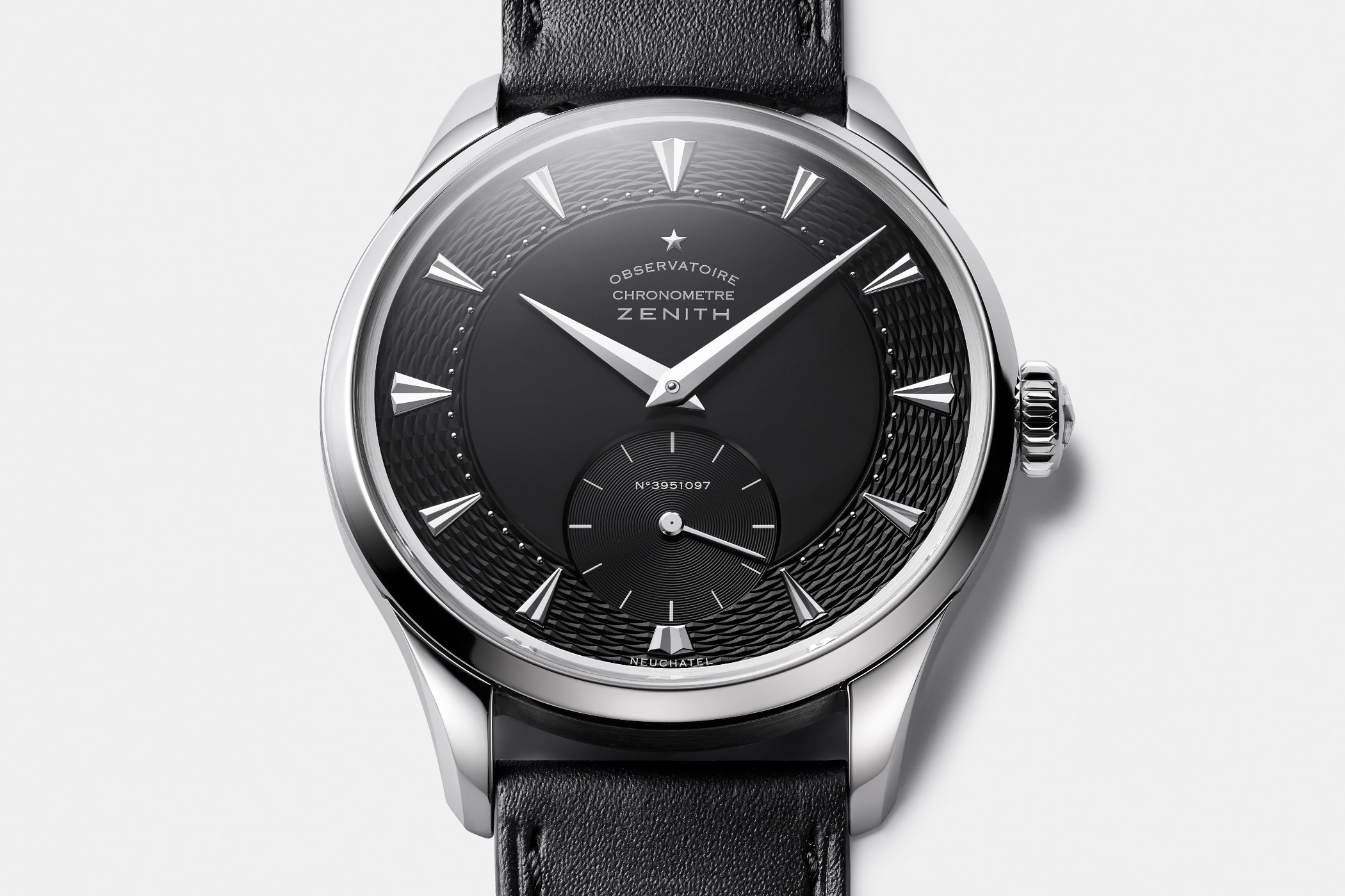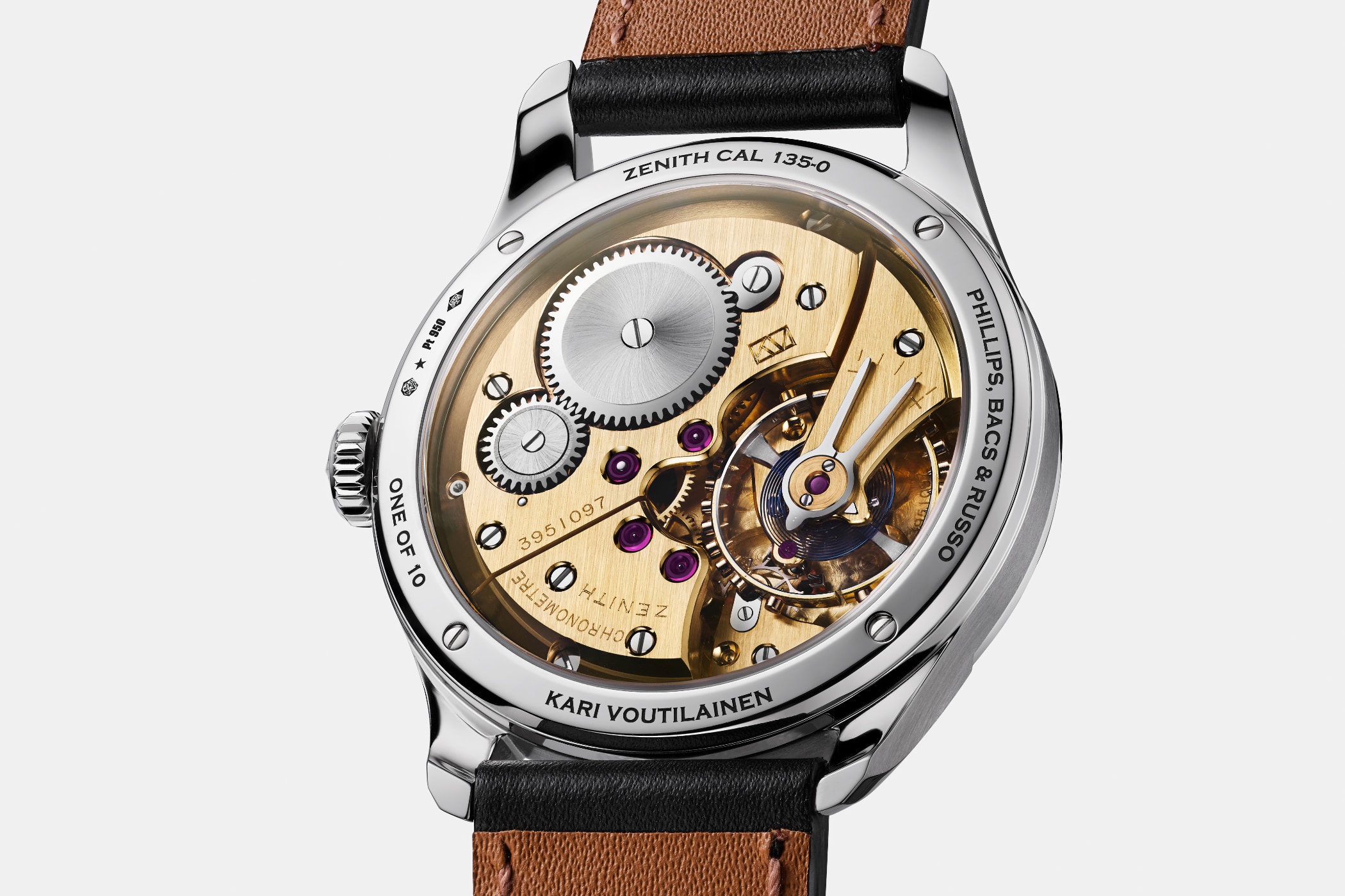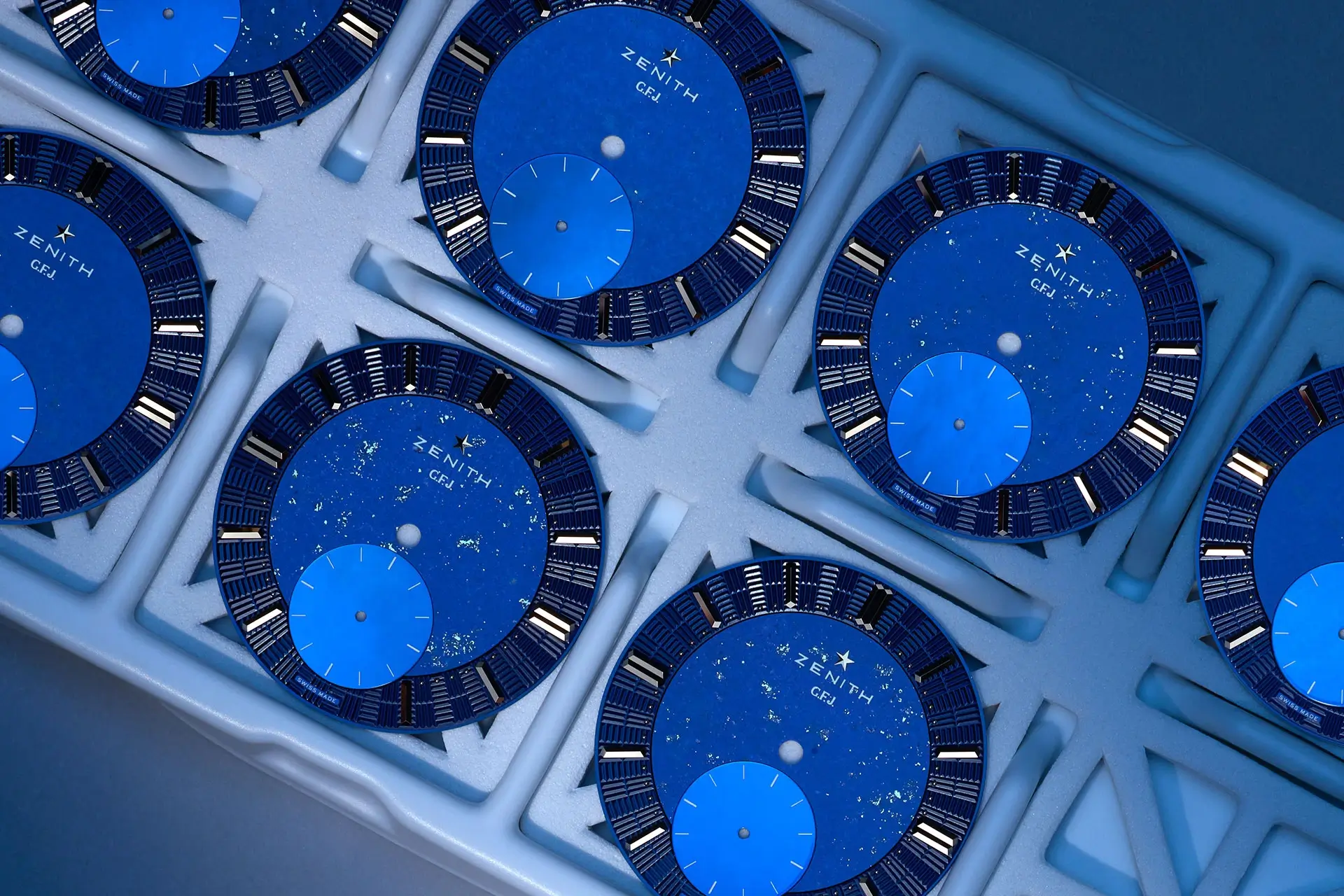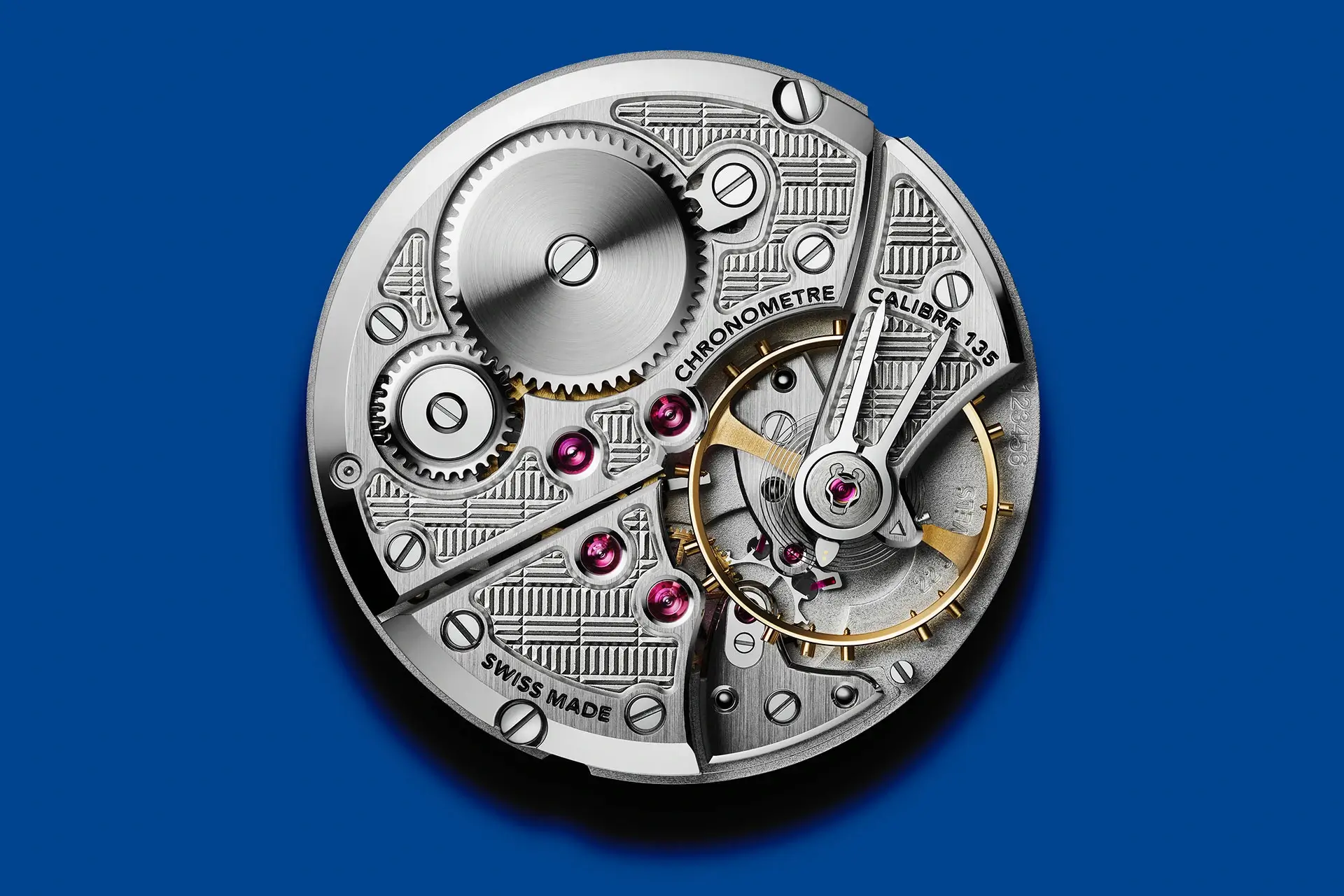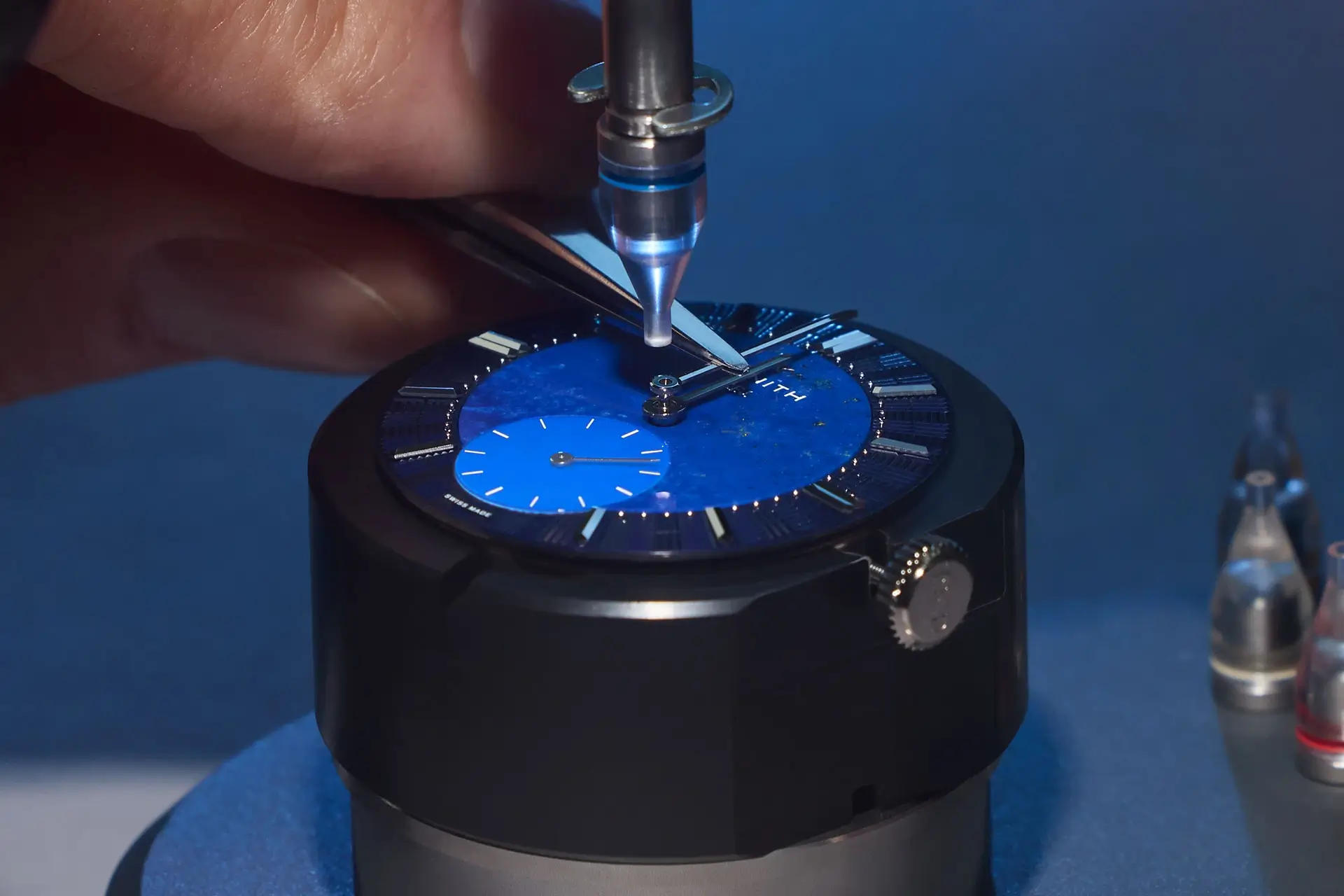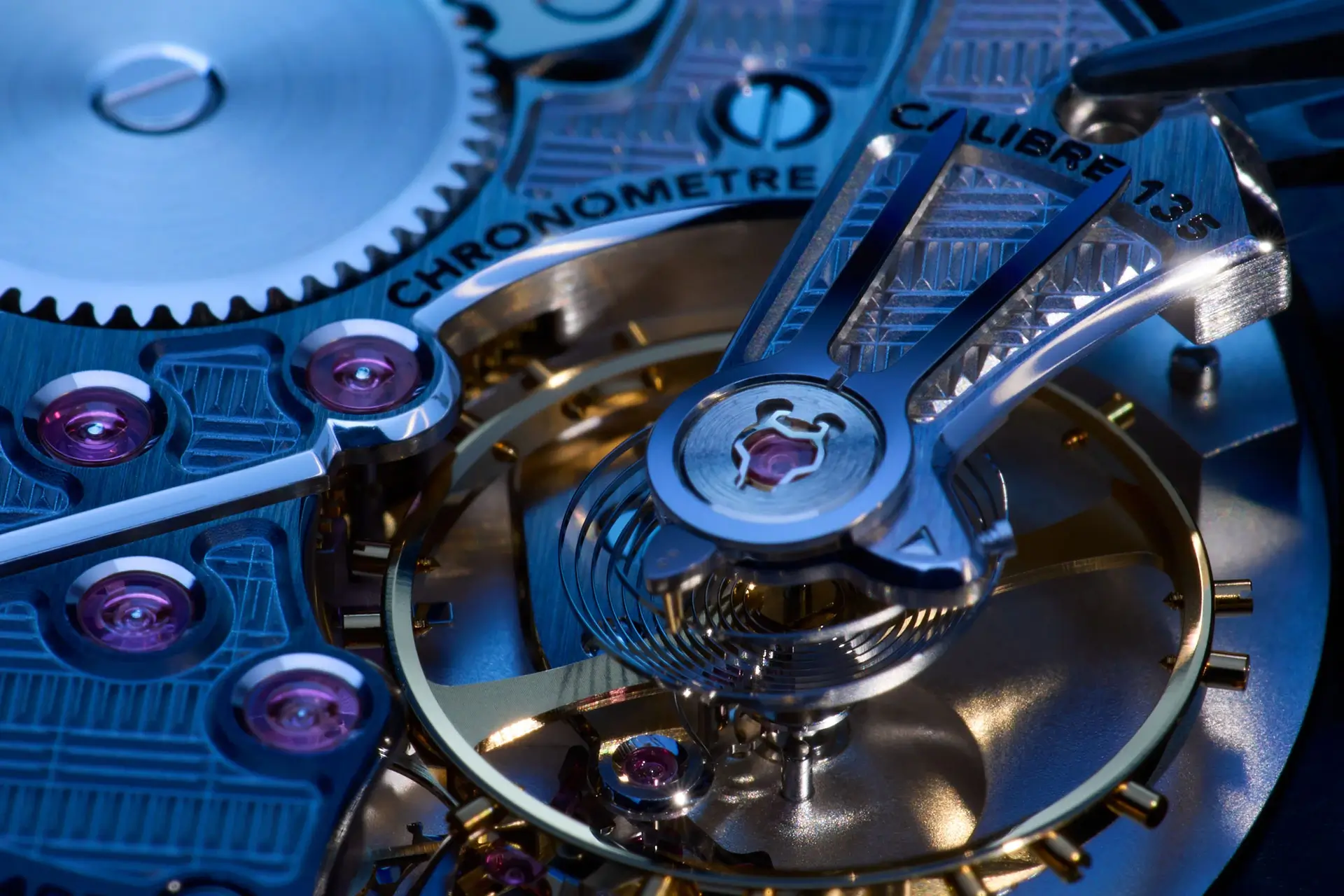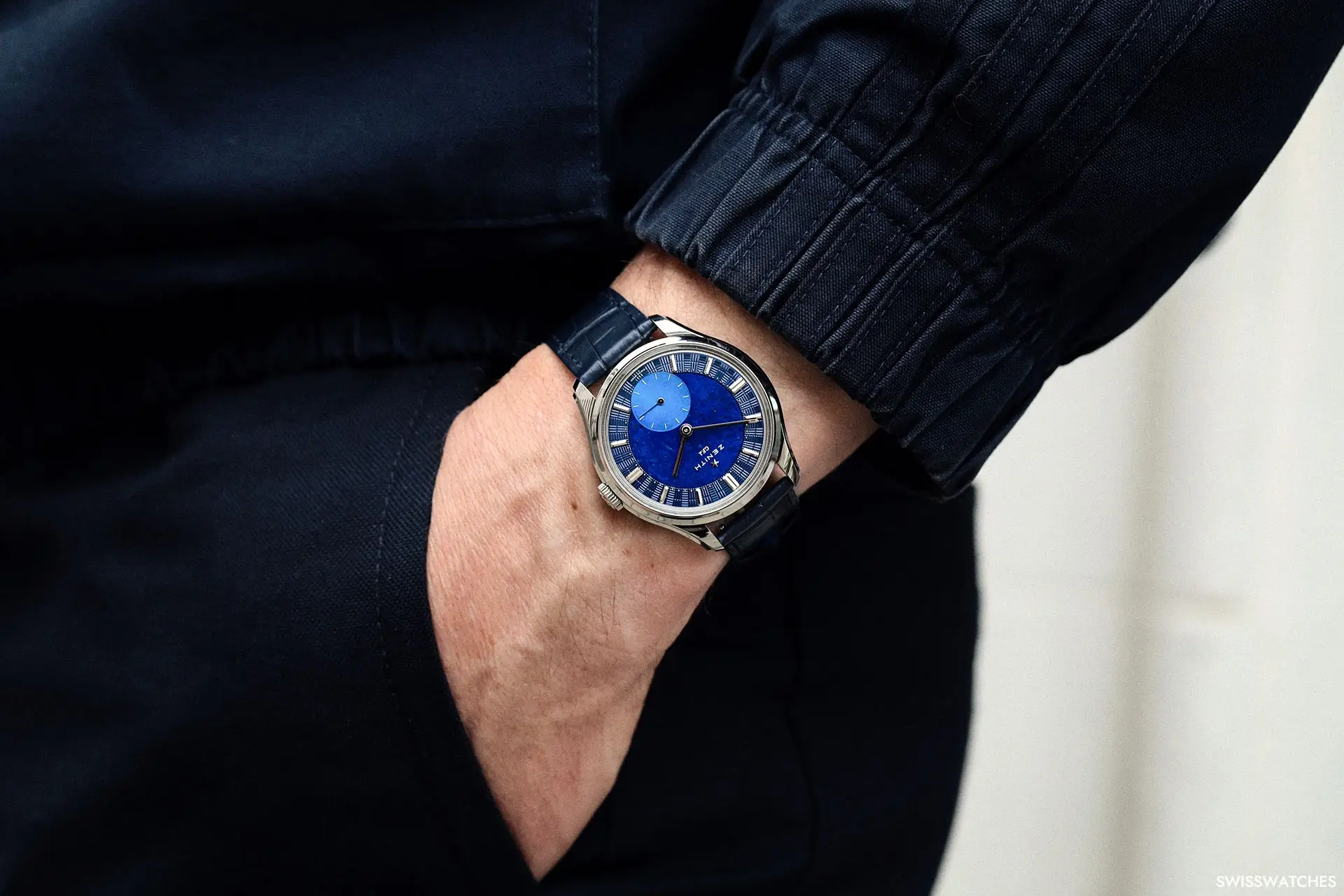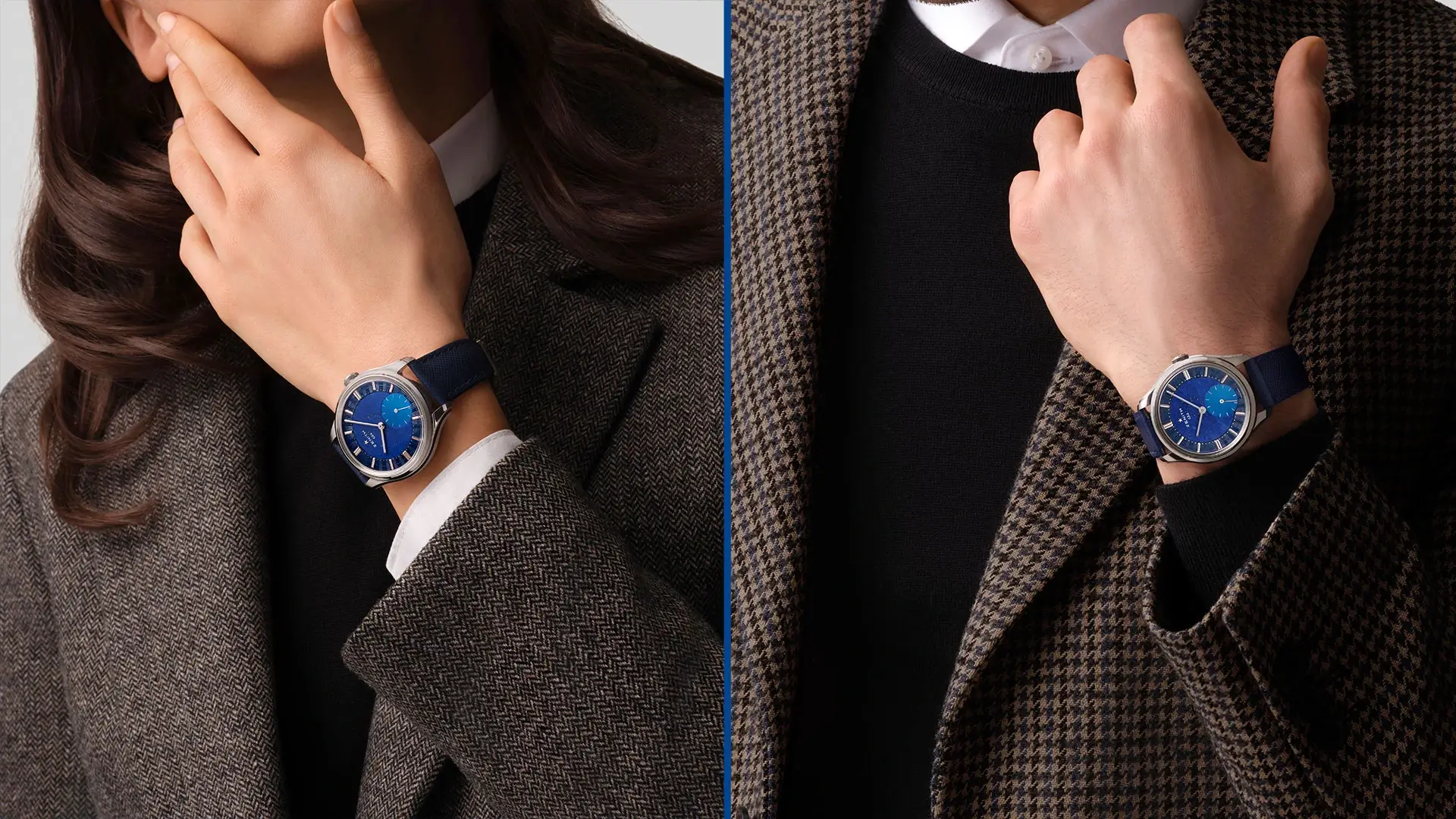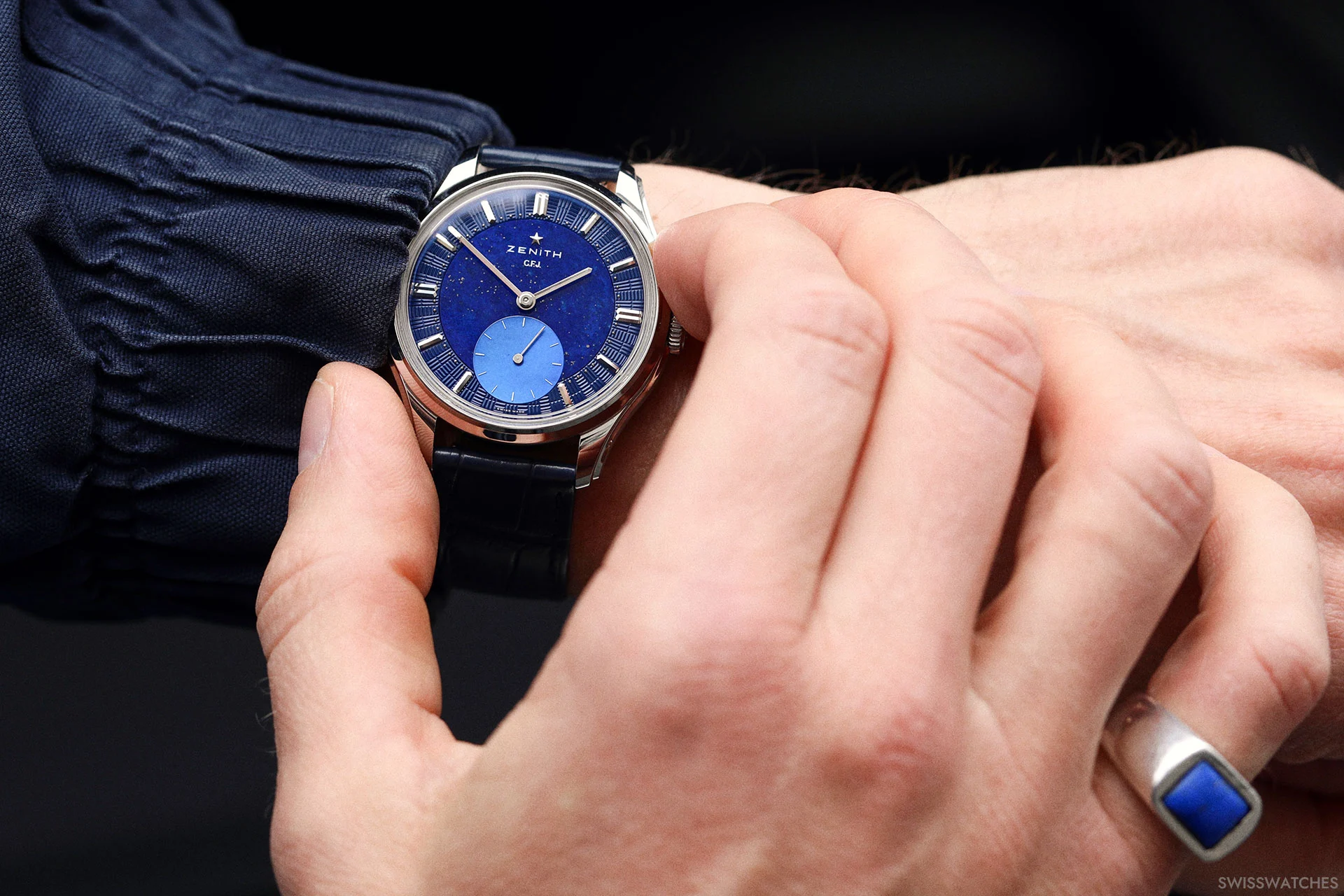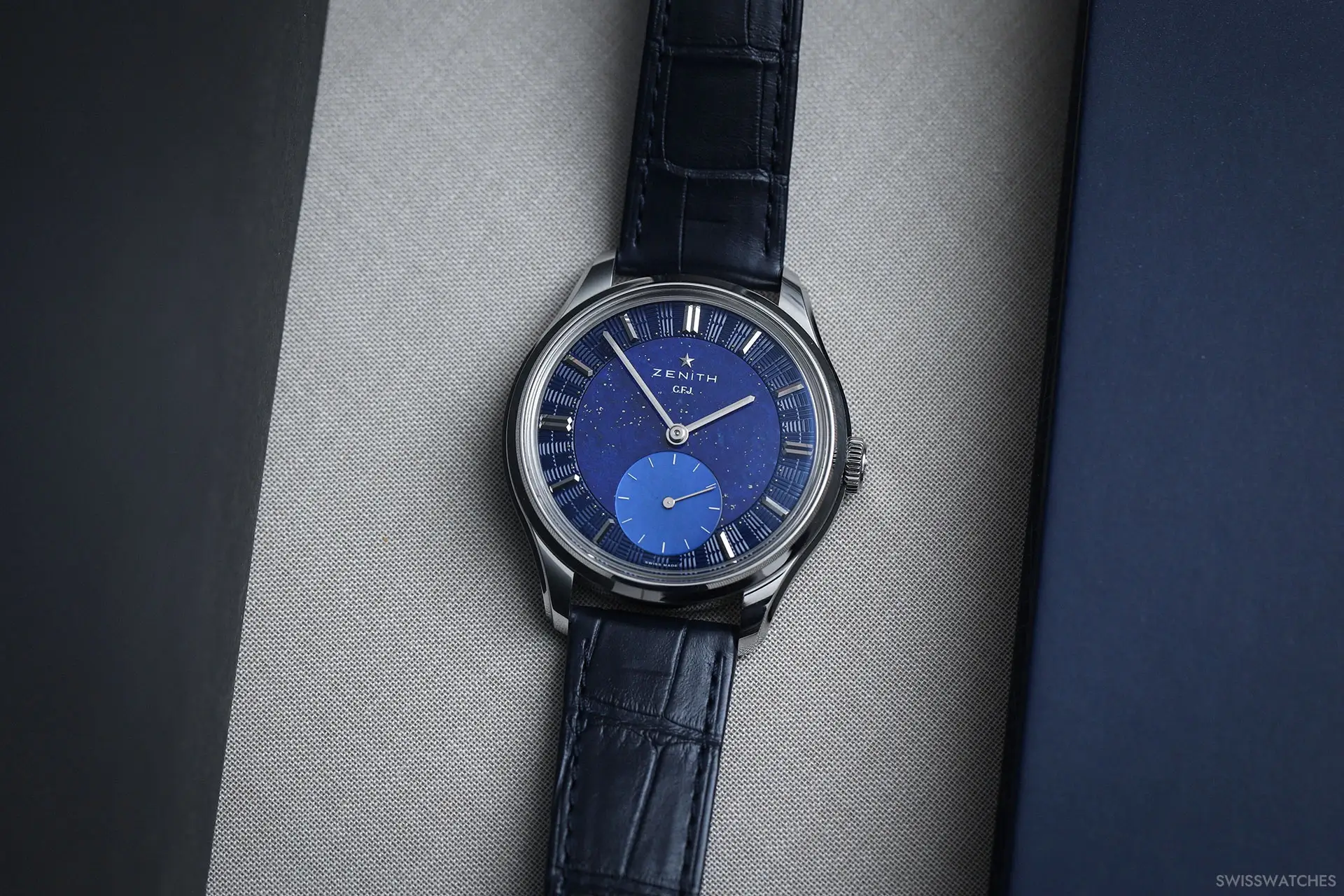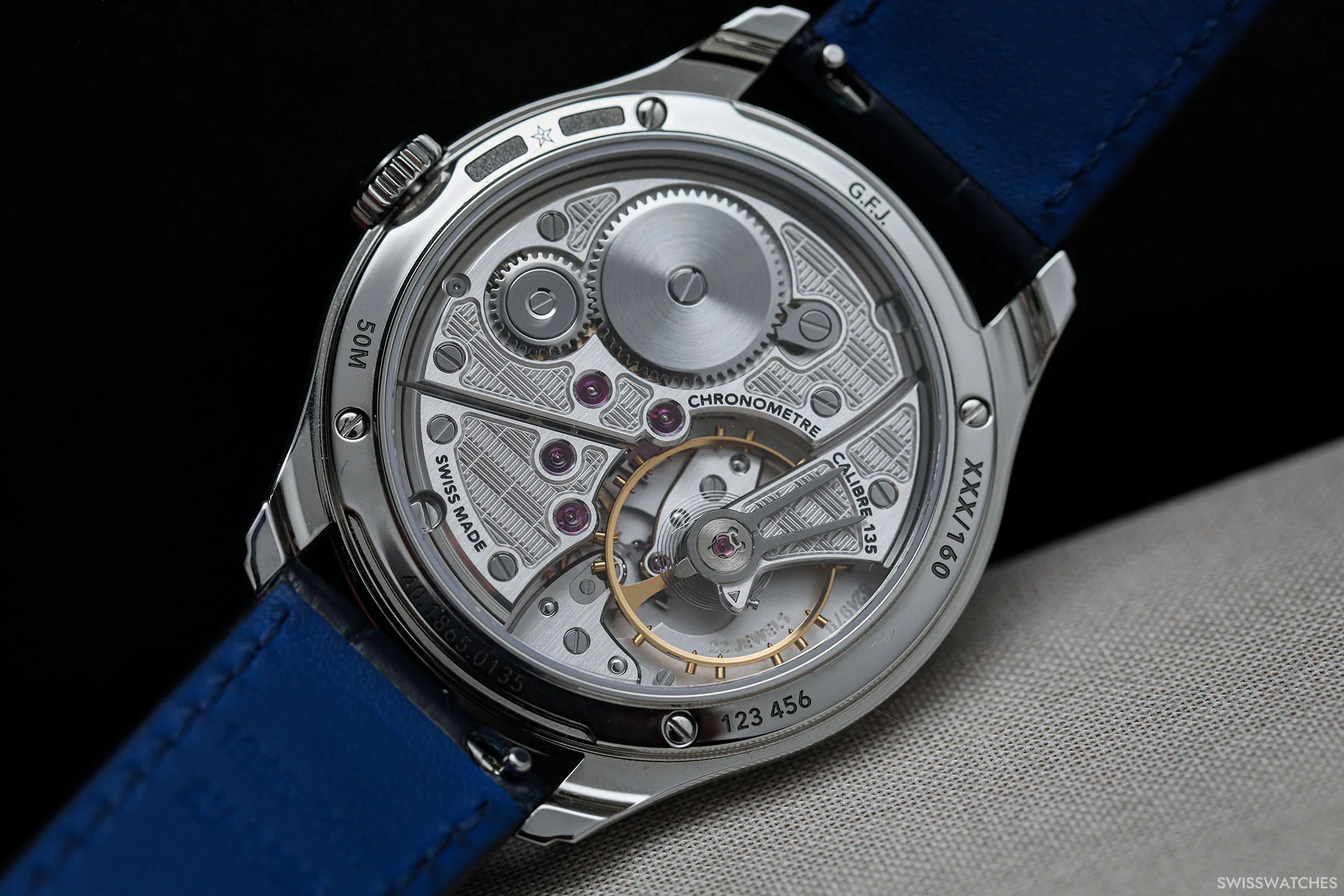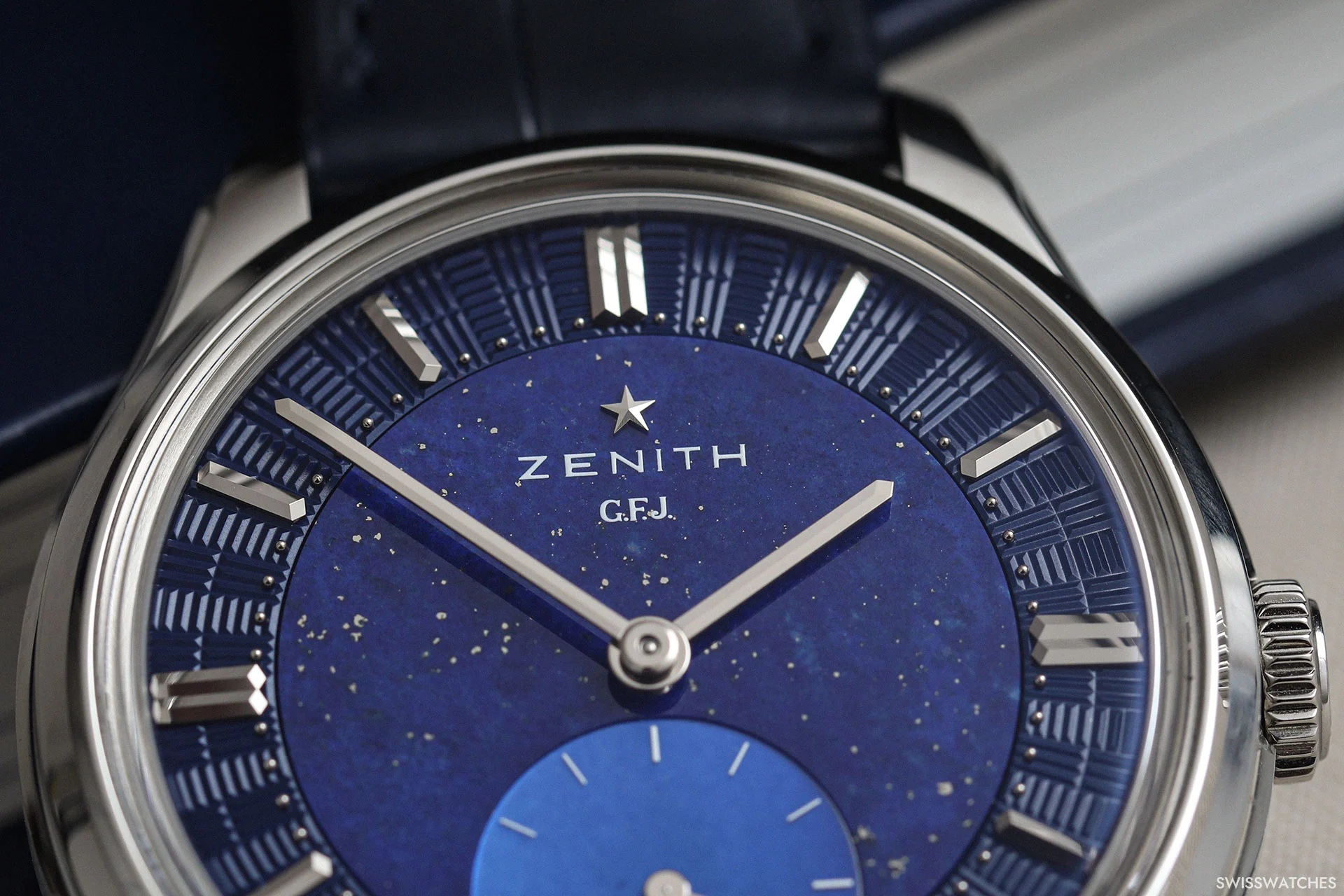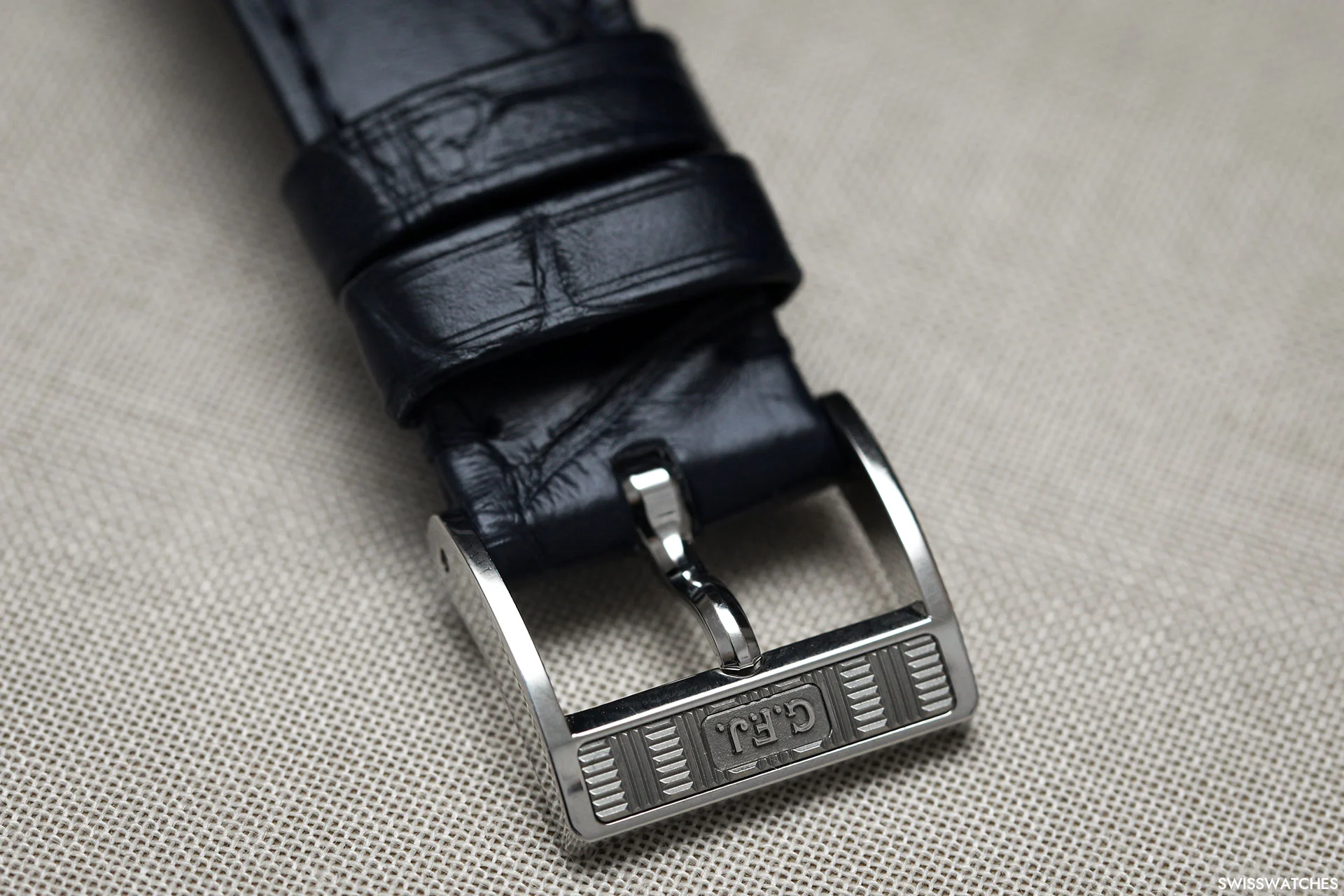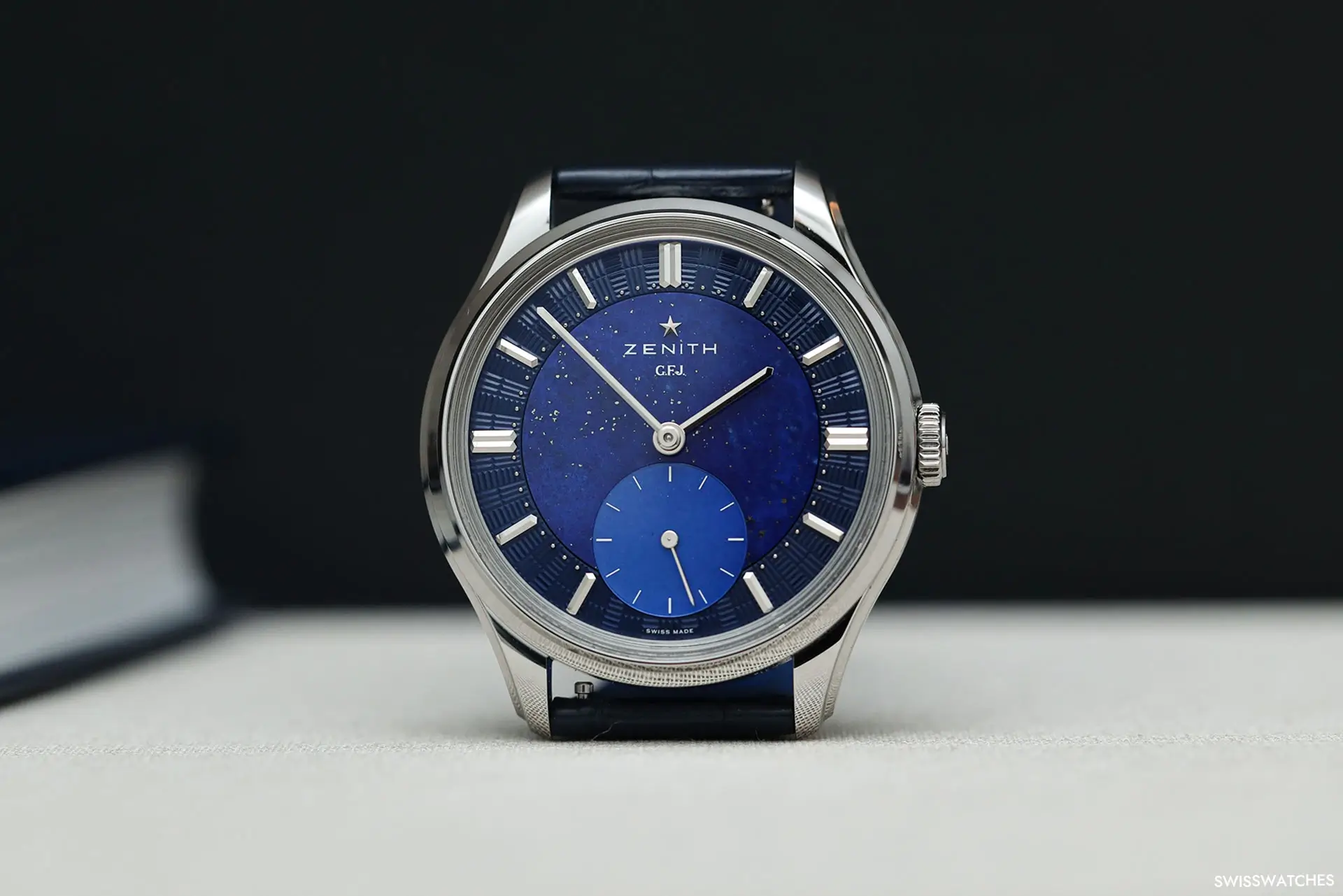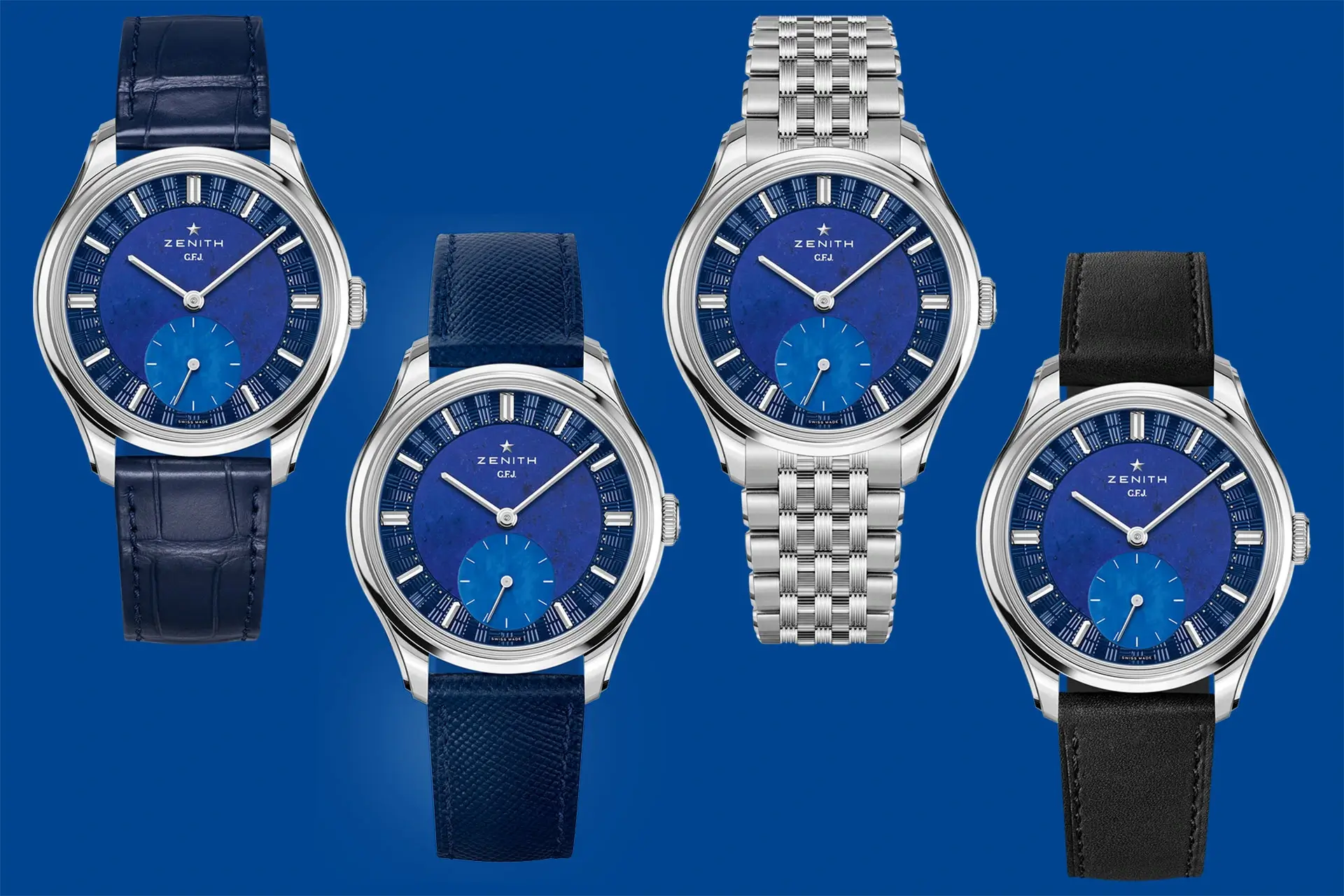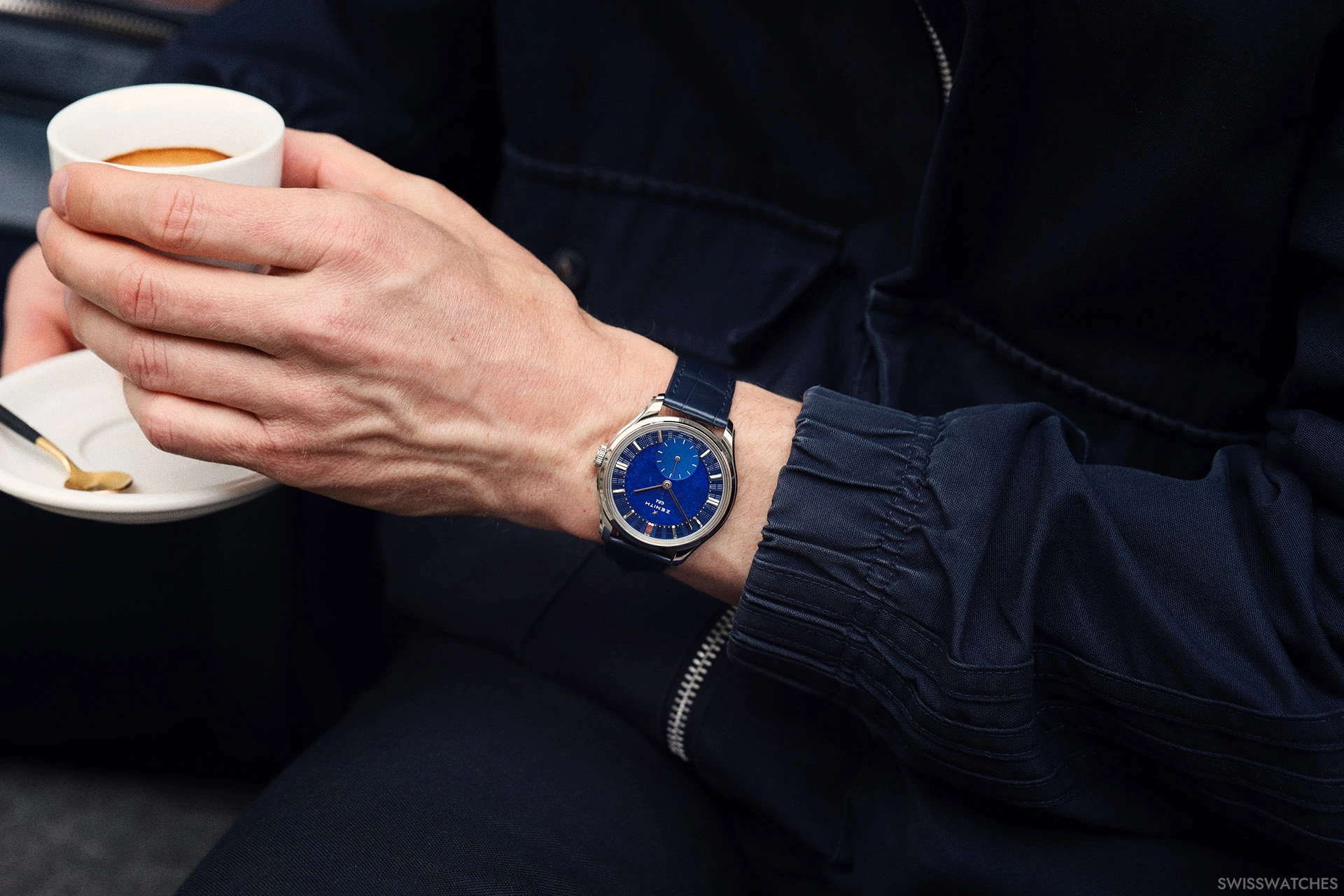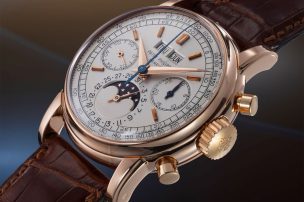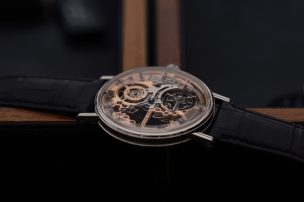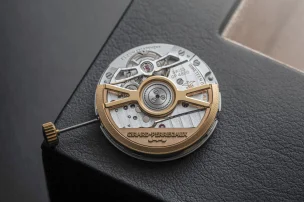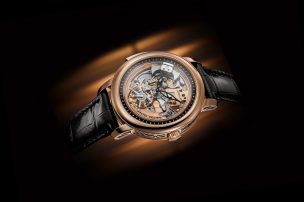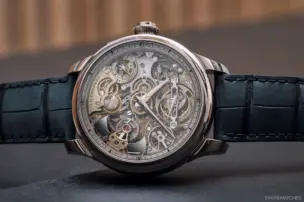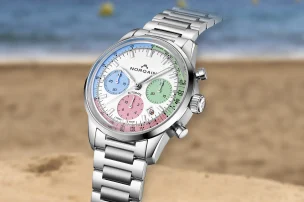
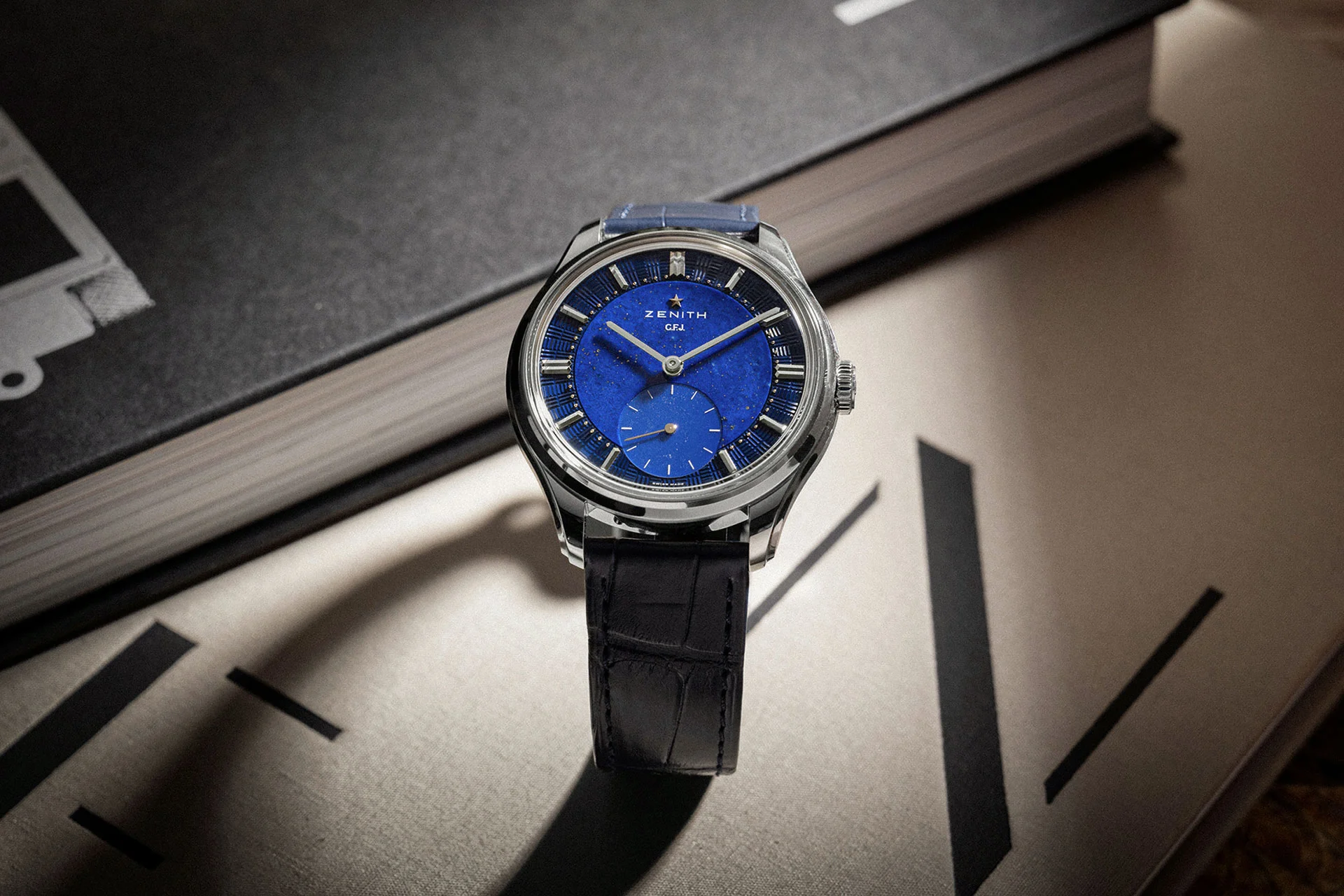
The New Zenith G.F.J. With Calibre 135
No watch brand has won as many chronometry prizes as Zenith. To mark its 160th anniversary, Zenith is celebrating this horological achievement with a new collection – and continuing the success story.
When I visited the Zenith manufacture in Le Locle a few years ago, I discovered a wall lined with certificates in the stairwell. They were just some of the many original certificates that the watchmaker had won in the chronometry competitions organised by the Neuchâtel Observatory. In total, there are 2,333 chronometry prizes – more than any other watch manufacturer has ever achieved. One could probably wallpaper a large part of the manufactory with all the certificates.
The highlight of these successes was the Calibre 135-O, which alone won 235 prizes, including five consecutive first prizes in the wristwatch category – an achievement that is still unrivalled today. This year, on the occasion of Zenith’s 160th anniversary, the historic Calibre 135-0 is being revived in the form of a modern version, appearing for the first time in a new collection that charmingly bears the name of its founder, G.F.J. (Georges Favre-Jacot), in full respect of the achievements of yesteryear.
The claim: the ‘perfect watch’
The roots of this exceptional expertise in calibre production date back to 1865, when the young Georges Favre-Jacot, inspired by American factories, implemented a revolutionary idea: to bring together all the skills required to build a watch under one roof. This broke with the prevailing ‘établissage’ model of Swiss watchmaking at the time and enabled unprecedented control over the entire production process. This vision gave rise to an industrial empire that soon employed over 600 craftsmen and produced over 100,000 watches per year. Georges Favre-Jacot’s drive was to create the ‘perfect watch’, an ideal that also inspired the name of the brand: Zenith – a word that embodies both advancement and perfection and symbolises the inexhaustible pursuit of an ideal.
Favre-Jacot’s innovative spirit went beyond mere production: he built his own tools and machines, ran a quarry, set up a brickworks, a foundry and even a print shop. According to Zenith, his workshops were the first in the watch industry to use electric light in 1886. This quest for complete control over the manufacturing process was key to ensuring the quality and precision of Zenith movements.
The 135-0 calibre takes the lead
A decisive proof of Zenith’s watchmaking expertise is the numerous chronometry competitions in which the manufacture has participated since 1897. With 2,333 chronometry prizes, including many records, Zenith established itself as the most honoured watch manufacturer in history. The highlight of these successes was the calibre 135-O, which was specially developed for these competitions and won 235 prizes alone. Between 1950 and 1954, it set a historic record by winning five consecutive first prizes in the wristwatch category at the Neuchâtel Observatory – an achievement that is still unrivalled today.
Back in the 1940s, the hand-wound calibre 135-0 was commissioned by Charles Ziegler, the technical director of Zenith, and ultimately developed by watchmaker Ephrem Jobin. By relocating the minute wheel, Ephrem Jobin solved a central problem: he created more space for the balance wheel at the heart of the movement, as only one hand shaft was required. This is crucial, because the more freely the balance wheel can oscillate, the less disruptive the effects of air turbulence and friction are. In addition, the calibre 135-0 had a Guillaume compensation balance combined with a steel balance spring, which was probably the best solution from a watchmaker’s point of view for the conditions prevailing at the time.
When Romain Marietta, Zenith’s Chief Product Officer, showed me the watch for the first time in Geneva recently, he told me a nice anecdote about Ephrem Jobin.
“For his 100th birthday – he was probably the oldest living watchmaker of his time – we created a limited edition of 100 pieces, the New Vintage 1955. He was invited to the Manufacture to receive number 100 of the series. The watch was not fitted with a 135 movement, but with an Elite movement that had a similar vintage aesthetic, including the small seconds at 6 o’clock. During the visit, we showed him a framed technical drawing of the 135 calibre, and when he saw it, his face lit up and he said: “I don’t remember what I had for lunch, but I remember the plans for the 135 calibre.” “We believe,” says Marietta, “that he hadn’t seen this drawing, which he had made himself, for at least 50 years.” Ephrem Jobin died in 2014 at the age of 105.
Zenith chronometrists Charles Fleck and René Gygax, who prepared and regulated the calibre for the competitions, were equally involved in the success of the 135-0 calibre. It should not be forgotten that the top regulators at the time spent a whole year preparing the watches for the competition. The competitors in the competitions also had access to the best movement components from the top suppliers. But there was much more at stake – the assembly and fine adjustment of the movements, i.e. the expertise and experience of the watchmakers – and Zenith stood out as a pioneer.
The calibre 135-0 had a rate accuracy of fractions of a second – in all positions, horizontal and vertical. However, it only achieved these values in competition mode, not when worn on the wrist with rapidly changing positions, even though the test criteria were strict enough in the competitions alone, where they were exposed to drastic temperature fluctuations and vibrations, among other things.
2022: The original calibre 135 returns for the first time
Between 1949 and 1962, around 11,000 movements of the 135-0 calibre were produced, most of which were used in watches for commercial sale. The winning movements for the chronometer competitions, however, were carefully stored in the brand’s archives and were never made available to the public. Until 2022, when Zenith launched a special project in collaboration with independent watchmaker Kari Voutilainen and the Philipps auction house in cooperation with Bacs & Russo. For the Zenith Calibre 135 Observatoire Limited Edition, which was limited to ten pieces, Kari Voutilainen and his team painstakingly restored ten historic Calibre 135s, retaining the original construction and regulation but adding elaborate decorations. It was housed in a 38 mm platinum 950 case and demand far exceeded the availability of just ten pieces.
2025: A new collection with a new calibre 135 for the anniversary
A new version could provide some relief to the high demand. To mark its 160th anniversary, Zenith is now presenting the calibre 135 again, albeit in a modern version and in a very special model that not only meets the high standards of founder Georges Favre-Jacot, but also bears his initials: the ‘G.F.J.’.
And yes, it is indeed a particularly beautiful and successful model that makes the hearts of many watch collectors and Zenith fans beat faster. For us, it is one of the absolute highlights of this year’s Watches & Wonders.
Zenith has retained the original design and architecture but has made significant improvements, including a Breguet hairspring and a stop-seconds mechanism. The new version offers an impressive power reserve of 72 hours (compared to 40 hours for the original) and optimised tooth geometry for greater efficiency. The balance beats at 2.5 Hz (18,000 vibrations per hour), and the aforementioned stop-seconds mechanism allows for precise setting to the second. Each movement is COSC-certified and set to a rate accuracy of +/-2 seconds per day.
Brick design as a tribute to the manufactory’s brickworks
The bridges bear the characteristic ‘brick’ guilloché pattern, a homage to the façade of the Zenith factory. We remember: Georges Favre-Jacot had created his own brickworks to produce the bricks for the manufactory.
The Zenith G.F.J. is presented in a 39.15 mm platinum 950 case with a height of 10.5 mm. The stepped bezel and rounded lugs give the watch a slender profile, while the notched crown bears the initials G.F.J.. The dial is protected by a box-shaped sapphire crystal.
A fascinating blue dial is presented beneath the sapphire crystal. The outer ring features a ‘brick’ guilloché pattern, faceted white gold indices and 40 hand-applied white gold beads. The centre of the dial is made of dark blue lapis lazuli, whose gold-coloured pyrite inclusions are reminiscent of a starry sky – an allusion to the brand name Zenith, which is derived from the highest point of the celestial vault and also explains the star in the logo. The large mother-of-pearl sub-dial at 6 o’clock displays the seconds, while the hours and minutes are read off by slim white gold hands.
Limited to 160 pieces, the ‘G.F.J.’ comes with three different straps: dark blue alligator leather, black calfskin and blue Saffiano calfskin. A seven-link platinum bracelet is also available on request. The price with leather strap is 52,900 euros.
Even after 160 years, Zenith remains one of the few watch manufacturers to bring together all the expertise required to develop and manufacture its watches and movements under one roof. More than 60 different professions work hand in hand in Le Locle, from watchmakers and artisans to engineers and technicians. This manufacture status not only guarantees technical expertise and a high standard of quality, but also forms a cornerstone of the brand’s capacity for innovation and creative freedom. May Zenith watchmaking remain as creative and innovative for the next 160 years.
